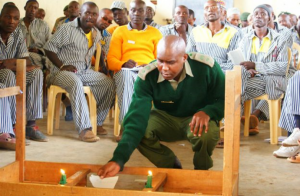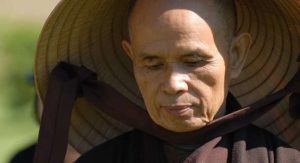
The Tibetan Buddhist Centre in Singapore recently organized a rare celebration of the archaeological and historical legacy of Shakyamuni Buddha, with an exhibition of the treasured Kapilavastu Buddha relics.
Titled “Beyond Time: The Legacy of Buddha’s Bone Relics” and hosted at Singapore’s Rise of Asia Museum, the five-day exhibition drew nearly 9,000 visitors from 24–29 November, all eager to view the sacred reliquiae that are heavily protected and which, under normal circumstances, cannot travel overseas.
“We are thrilled with the positive reception and are heartened by the overwhelming response from the public to host a future return of the Kapilavastu Buddha relics,” Tibetan Buddhist Centre (TBC) president Ng Wee Nee said in an announcement shared with BDG. “We look forward to bringing the exhibition back on an even bigger scale, and hope to work on other projects that will shine a light on the rich culture and history of Buddhism.”
Established in 2006 under the advice and direction of His Holiness the Dalai Lama, the TBC is a non-profit organization working to propagate the Buddhadharma, promote Tibetan culture, and promote unity and harmony among all Buddhist traditions. The center also hosts regular Dharma classes taught by resident teacher Geshe Lobsang Yonten.
The focal point of the landmark exhibition were seven bone relics and an alms bowl, all believed to be from the historical Buddha. Known collectively as the Kapilavastu relics, they were recovered in 1898 from a site in Piprahwa, a village near the city of Siddharthnagar in the Indian state of Uttar Pradesh. Piprahwa is renowned for its Buddhist archaeological excavations that many believe mark the site of the ancient city of Kapilavastu.

“The Kapilavastu Buddha relics boast a fascinating history, dating back to their discovery in 1898 at the stupa site in Piprahwa, which is now recognized as a UNESCO World Heritage Site,” the TBC explained. “On the Buddha’s death and cremation, his ashes were distributed among eight royal clans, one of which was the Shakyas of Kapilavastu. These relics were then enshrined within stupas, which became sites of veneration. In 2015, the relics were accorded the ‘AA’ category of Antiquities and Art Treasures, which meant they could not be ordinarily taken out of Sri Lanka for viewing. However, for the first time since their discovery over 120 years ago, they made their first appearance in Singapore.”
The exhibition also featured a unique collection of 31 thangka paintings. The artworks offered a visual chronicle of the story of Shakyamuni Buddha—from his birth in Lumbini to his enlightenment beneath the Bodhi tree in Bodh Gaya, as well as events from his past lives—and his profound teachings of compassion, wisdom, and liberation.
Alongside the exhibits were a host of activities, included walking meditation sessions around a stupa, a screening of the documentary Bones of the Buddha, and daily blessing sessions conducted by the esteemed monk Venerable Dr. Waskaduwe Mahindawansa Mahanayake Thero.
The organizers noted that the strong turnout for the exhibition “re-emphasized Singapore’s growing status as a hub for religious and cultural exchanges.”
The Tibetan Buddhist Centre also revealed that it plans to host another exhibition at the Rise of Asia Museum in June next year, titled “Rise and Spread Of Buddhism in Asia.”

Singapore is a multicultural island state in Southeast Asia with a population of almost six million people. More than 31 per cent of Singaporeans identify as Buddhists, according to census data for 2020. Christians make up 18.9 per cent of the population and Muslims account for 15.6 per cent. Daoism and other Chinese religions make up 8.8 per cent, Hinduism 5 per cent, and Sikhism and other religions 0.6 per cent. About 20 per cent of Singaporean profess no religious affiliation.
See more
Related news reports from BDG
Private: Lumbini Development Trust Partners with Singapore-based Organizations to Safeguard Ramagrama Stupa in Nepal
Ven. Thubten Chodron Gives First In-person Teachings in Singapore Since the Pandemic
Foo Hai Ch’an Monastery Funds Buddhist Studies Scholarships, Fellowships at National University of Singapore
Singapore Buddhist Lodge Celebrates 85th Anniversary
Interfaith Harmony: Singaporean Buddhists and Hindus Donate Rice to Muslims for Ramadan












